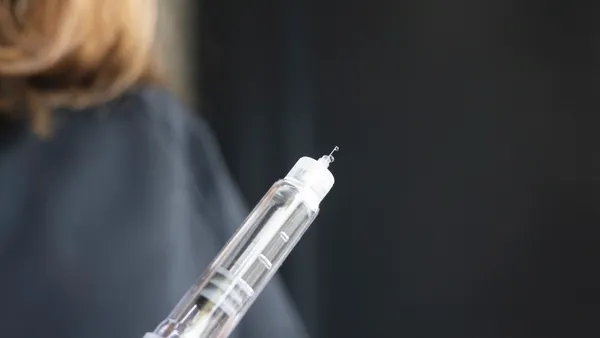Countless studies have been conducted and articles written about the problem of medication nonadherence, primarily among those living with chronic conditions. Depending on the investigator or author, these are often biased toward the perspective of a single stakeholder. Yet nonadherence is a problem for patients, payers, providers, and communities.
It’s a problem for patients because it often leads to much larger health issues and comorbidities down the road, like the person with untreated diabetes who develops retinopathy. It’s a problem for providers because it limits how much they can help patients become healthier. It’s a problem for payers, including employers and governments, because it increases healthcare costs that result from unmanaged conditions, some with unfortunately catastrophic outcomes. And it’s a problem for communities because it can significantly constrain the benefits that an FDA-approved treatment may provide.
Adherence is influenced by many factors
There are several factors that impact a patient’s adherence to their prescribed treatment. According to the National Institutes of Health (NIH), several of the “factors that may predict nonadherence include forgetfulness, illiteracy, inability to understand the purpose of treatment, not perceiving the treatment as necessary, a lack of trust in the treatment, and a lack of knowledge about the effects of treatment.”¹ Fear of needles and negative medication side effects are other adherence factors, and affordability — particularly in the management of chronic conditions — is growing in importance.
Especially when other expenses like food, gas, and housing are skyrocketing, medication affordability is a critical factor affecting whether a patient stays on therapy or drops off. In other words, affordability is often a key driver of adherence, and that can be especially true during challenging economic times like what we’re experiencing now.
Affordability can be a precursor to improved adherence
Just how much does affordability affect adherence? Data suggest the link may be strong across many health conditions. GoodRx research in 2021 showed that 1 in 3 patients who took prescription medications for a chronic condition reported skipping at least one prescription fill due to cost.² When you consider the negative consequences of discontinued treatment, the ripple effects of unaffordable medications are significant.
More evidence comes from a meta-analysis that included people with different cancers, which found that “higher out-of-pocket costs were associated with greater odds of nonadherence for most of the types of cancer in the study.”³ And a recent article on the GoodRx Provider platform looked at coverage types and concluded that “affordability is a major cause of medication nonadherence — particularly for the uninsured, the underinsured, and those with Medicare.”⁴
Yet, patients may not be aware of their affordability options
Even when patient affordability solutions are available to lower out-of-pocket costs, many people are not aware of their existence. A study of cancer patients and survivors⁵ published in May 2022 by the American Cancer Society Cancer Action Network (ACS CAN) found that "about half have heard of copay assistance programs but just one-quarter have applied to one.” Eighty-three percent “of those who have enrolled agree that the assistance provides access to medication … that they otherwise couldn’t afford." That’s one reason pharma companies partner with GoodRx: to drive increased awareness and utilization of their existing copay and patient support programs.
We estimate that GoodRx has helped patients obtain 80 million prescriptions they otherwise may not have been able to afford.⁶ GoodRx has been improving patient affordability for over a decade, for generics and branded medications, including specialty treatments – some by more than 50%. “Our solutions enable pharma manufacturers to engage with providers and patients so they can make informed and empowered decisions about care,” said Akeel Williams, VP, Strategy and Operations, Pharma Manufacturer Solutions at GoodRx. “Our goal is to minimize worries about out-of-pocket costs and affordability in the decision-making process, so a provider can prescribe the most appropriate medication for their patient, and the patient is not forced to choose between groceries or medicine.”
Adherence contributes to improved outcomes
A study of chronic metabolic diseases published in Research in Social and Administrative Pharmacy concluded that, “Targeting good medication adherence could be a valuable policy strategy to effectively manage chronic diseases to improve health outcomes.”⁷ A patient’s decision whether to stay on therapy or forego therapy is not made each month when it’s time to refill. Instead, the cost of medication may be an ongoing factor as a patient makes daily trade-offs within their household budget.
The takeaway is that today’s interventions, including improved affordability, can have long-term health impacts. Affordability is an important lever that can increase adherence, which in turn can improve health outcomes. And that starts to solve problems for a range of healthcare stakeholders. Learn more here about affordability solutions from GoodRx.
Resources
¹ Hugtenburg JG, et al., Definitions, variants, and causes of nonadherence with medication: a challenge for tailored interventions, Patient Prefer Adherence. 2013 Jul 10;7:675-82, https://www.ncbi.nlm.nih.gov/pmc/articles/PMC3711878/
² Nguyen A. et al.'The GoodRx Effect; 2021.
³ Wehrwein, Peter, AMCP 2022: High Out-of-Pocket Costs Are Associated with Nonadherence Among Patients Taking Oral Cancer Drugs, Managed Healthcare Executive, March 31, 2022. https://www.managedhealthcareexecutive.com/view/amcp-2022-high-out-of-pocket-costs-are-associated-with-nonadherence-among-patients-taking-oral-cancer-drugs
4 Evans, Alex, How Affordability Impacts Medication Adherence, GoodRx.com, July 18, 2022. https://www.goodrx.com/hcp/providers/how-affordability-impacts-adherence
5 American Cancer Society Cancer Action Network. "Survivor Views: Copay Assistance and Patient Navigation," July 18, 2022, https://www.fightcancer.org/policy-resources/survivor-views-copay-assistance-and-patient-navigation
6 GoodRx Q3 2021 Letter to Shareholders, November 10, 2021, chrome-extension://efaidnbmnnnibpcajpcglclefindmkaj/https://investors.goodrx.com/static-files/10cb1adf-5ada-4dff-b394-eb200c774c5a
7 Euna Han, et al., The impact of medication adherence on health outcomes for chronic metabolic diseases: A retrospective cohort study, Research in Social and Administrative Pharmacy, 2014. https://www.sciencedirect.com/science/article/abs/pii/S1551741114000254












